Daraenamu Tree in Changdeokgung Palace (창덕궁 다래나무)
1.9 Km 9239 2020-01-30
99, Yulgok-ro, Jongno-gu, Seoul
+82-2-3668-2300
Daraenamu Tree in Changdeokgung Palace is estimated to be 600 years old, meaning it had likely been planted before the palace was built. The tree stands 19m in x_height, and has six separate trunks sprawling in all directions. It is the biggest and the oldest in Korea. It is designated and protected as a National Natural Monument.
Okcheon Maeun Jokbal (옥천매운족발)
1.9 Km 59 2021-03-29
23, Jong-ro 51na-gil, Jongno-gu, Seoul
+82-2-3672-7168
This is a restaurant serving delicious spicy pork feet. This Korean dishes restaurant is located in Jongno-gu, Seoul. The most famous menu is braised pigs' feet.
Changdeokgung Palace Complex [UNESCO World Heritage Site] (창덕궁과 후원 [유네스코 세계문화유산])
1.9 Km 865457 2024-06-04
99 Yulgok-ro, Jongno-gu, Seoul
Changdeokgung Palace was the second royal villa built following the construction of Gyeongbokgung Palace in 1405. It was the principal palace for many kings of the Joseon dynasty, and is the most well-preserved of the five remaining royal Joseon palaces. The palace grounds are comprised of a public palace area, a royal family residence building, and the rear garden. Known as a place of rest for the kings, the rear garden boasts a gigantic tree that is over 300 years old, a small pond and a pavilion.
The palace gained importance starting from the time of Seongjong, the 9th king of Joseon, when a number of kings began using it as a place of residence. Unfortunately, the palace was burned down by angry citizens in 1592 when the royal family fled their abode during the Imjin War. Thanks to Gwanghaegun, the palace was restored in 1611. Even today, it houses a number of cultural treasures, such as Injeongjeon Hall, Daejojeon Hall, Seonjeongjeon Hall, and Nakseonjae Hall.
Changdeokgung Palace’s garden behind the inner hall, called the "Secret Garden," was constructed during the reign of King Taejong and served as a rest area for the royal family members. The garden had formerly been called Bugwon and Geumwon, but was renamed Biwon Garden, or Secret Garden, after King Gojong came into power. The garden was kept as natural as possible and was touched by human hands only when absolutely necessary. Buyongjeong Pavilion, Buyongji Pond, Juhamnu Pavilion, Eosumun Gate, Yeonghwadang Hall, Bullomun Gate, Aeryeonjeong Pavilion, and Yeongyeongdang Hall are some of the many attractions that occupy the garden. The most beautiful time to see the garden is during the fall when the autumn foliage is at its peak and the leaves have just started to fall.
Though it has been treasured by Koreans for centuries, Changdeokgung Palace and its complex was recognized as a World Cultural Heritage site by the UNESCO World Cultural Heritage Committee in December of 1997 during the committee meeting in Naples, Italy.
Korea University Ice Skating Rink (고려대학교 아이스링크)
1.9 Km 28447 2020-04-24
145, Anam-ro, Seongbuk-gu, Seoul
+82-2-3290-4243
The indoor ice-skating rink is located in Korea University in Anam-dong in the Seongbuk-gu district of Seoul. This Olympic size rink welcomes guests all year long.
JW Marriott Dongdaemun Square Seoul (JW 메리어트 동대문 스퀘어 서울)
1.9 Km 15031 2021-02-17
279, Cheonggyecheon-ro, Jongno-gu, Seoul
+82-2-2276-3000
JW Marriott Dongdaemun Square Seoul is located at the fusion of culture, entertainment and commerce in the dynamic Dongdaemun and is JW Marriott’s second hotel to open in Seoul. The hotel has 170 guest rooms, including 15 suites, a swimming pool, 24-hour fitness center, and full-service spa, all for the convenience of its guests.
JW Marriott Dongdaemun Square Seoul has four meeting rooms, including the Grand Ballroom, a modern, yet refined space housing a cutting-edge 98 screen Samsung LFD media wall to ensure that every event held in the ballroom is a success. The hotel also has a variety of dining options including the internationally renowned steakhouse BLT Steak, Tavolo 24 which serves breakfast, lunch and dinner, The Lounge, The Griffin Bar, and Seoul Baking Company.
Olive Young - Jeongneung Branch [Tax Refund Shop] (올리브영 정릉)
1.9 Km 0 2024-04-17
38, Bogungmun-ro, Seongbuk-gu, Seoul
-
Seoul City Wall Museum (한양도성박물관)
1.9 Km 21178 2023-12-22
283, Yulgok-ro, Jongno-gu, Seoul
+82-2-724-0243
Hanyangdoseong, the Seoul City Wall, built in 1396, was the city fortress wall that protected the capital city Seoul for over 600 years. The fortress wall was built along the terrains and although it became partially damaged during the modernization process, its original form remains well to this day, making it a cultural heritage that coexists with the modern city. The Seoul City Wall Museum, located in Heungjinjimun Park, is a museum containing the history and culture of city wall from the Joseon dynasty to the present. It is a cultural space with a permanent exhibition hall, special exhibition hall, city wall information center, and study room.
Olive Young - Dongmyo Station Branch [Tax Refund Shop] (올리브영 동묘앞역)
2.0 Km 0 2024-04-17
37-1, Jibong-ro, Jongno-gu, Seoul
-
KGC - Dongmyo Branch [Tax Refund Shop] (KGC 동묘점)
2.0 Km 0 2024-04-22
347, Jong-ro, Jongno-gu, Seoul
-
Nakseonjae Hall (낙선재)
2.0 Km 29377 2021-09-30
99, Yulgok-ro, Jongno-gu, Seoul
+82-2-2148-1822
Located inside Changdeokgung Palace, Nakseonjae Hall is a one-story structure built in ikgong style (bird wing-shaped eaves placed on top of the pillars) with a hip tiled and gable roof. It has 6 kan in the front and 2 kan (traditional unit of measurement of the space between pillars) to the sides. It originally belonged to the nearby Changgyeonggung Palace, but came to be considered a part of Changdeokgung Palace in more recent years.
The hall was constructed in 1846 (12th year of King Heonjong’s reign) and it is collectively called Nakseonjae together with the adjacent Seokbokheon Hall and Sugangjae Hall.
Behind the building is a flower garden made of stacked large stones. The chimney, the flowers, and the oddly shaped stones harmoniously blend into one another to create an outstanding landscape gardening.
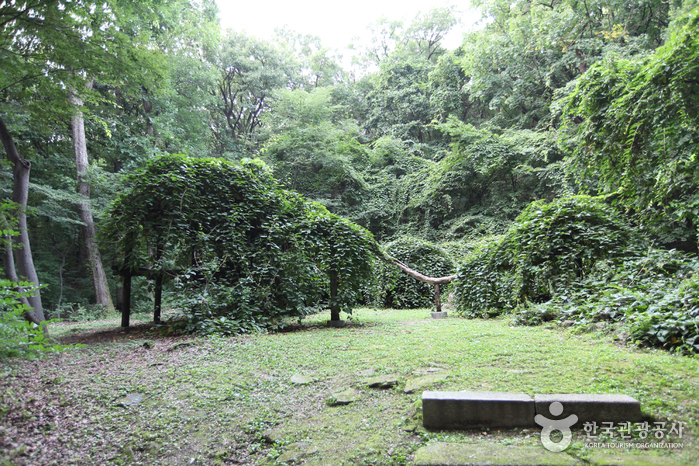
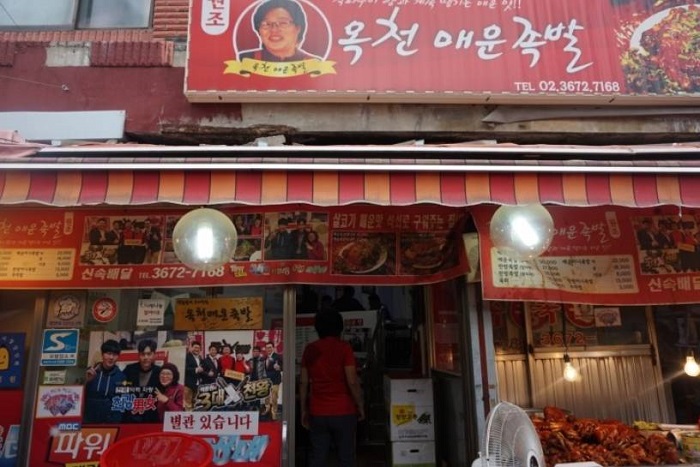
![Changdeokgung Palace Complex [UNESCO World Heritage Site] (창덕궁과 후원 [유네스코 세계문화유산])](http://tong.visitkorea.or.kr/cms/resource/84/2932684_image2_1.bmp)
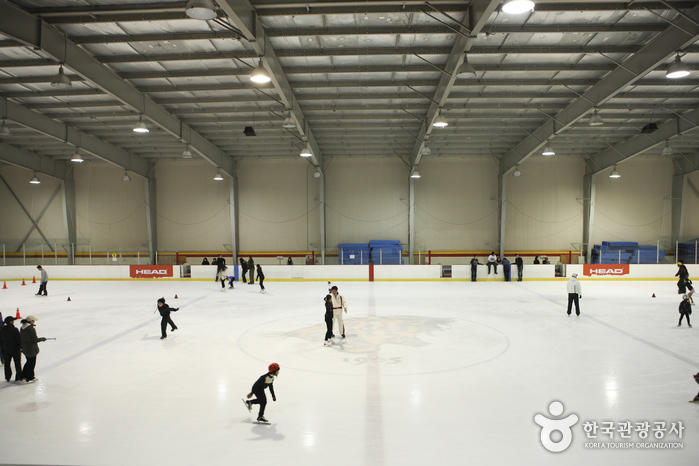

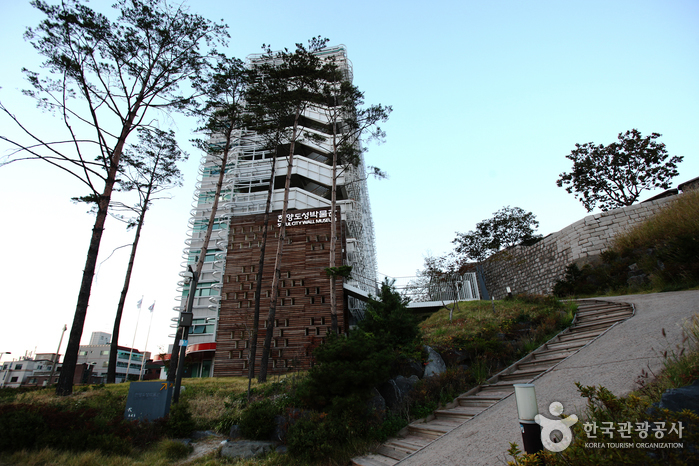
![Olive Young - Dongmyo Station Branch [Tax Refund Shop] (올리브영 동묘앞역)](http://tong.visitkorea.or.kr/cms/resource/87/2878187_image2_1.jpg)
![KGC - Dongmyo Branch [Tax Refund Shop] (KGC 동묘점)](http://tong.visitkorea.or.kr/cms/resource/91/2878191_image2_1.jpg)
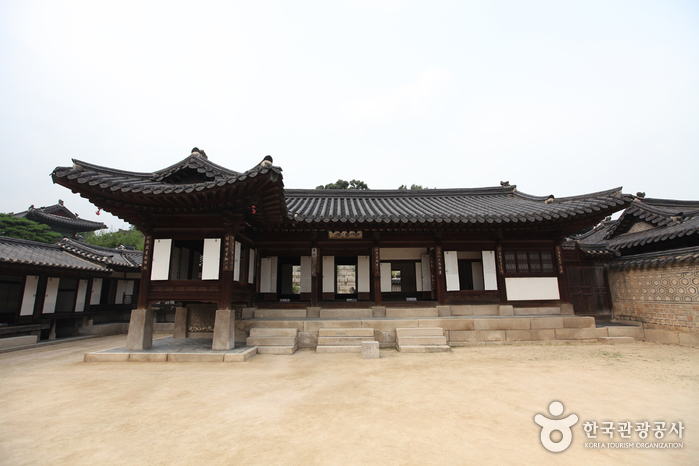
 English
English
 한국어
한국어 日本語
日本語 中文(简体)
中文(简体) Deutsch
Deutsch Français
Français Español
Español Русский
Русский